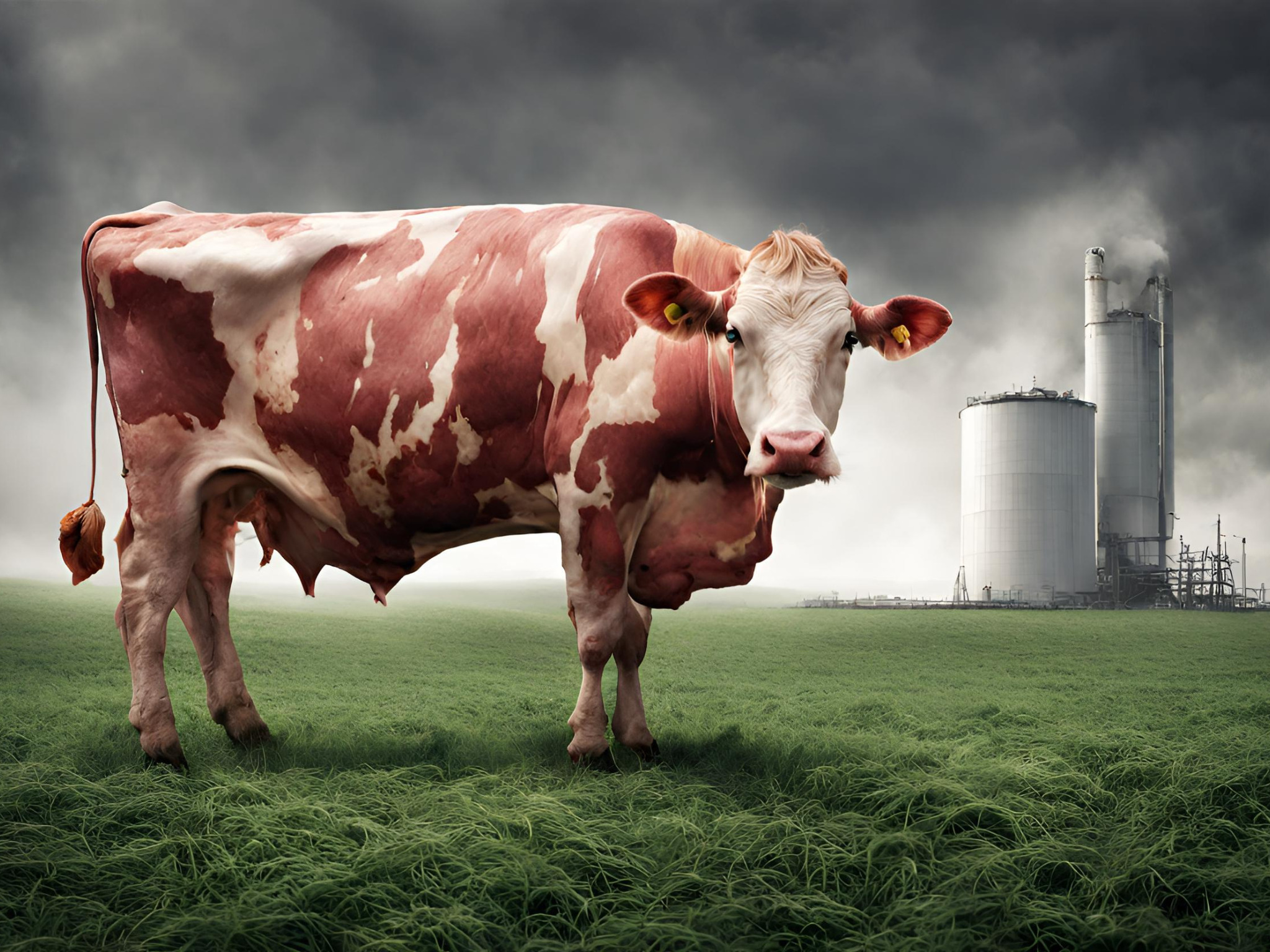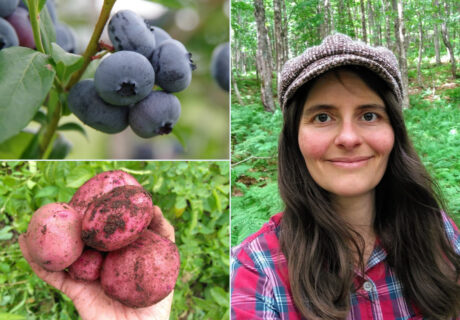6 Mins Read
Greenhouse gas emissions from the world’s 20 largest meat and dairy producers increased by 3.28% in the last year, according to new analysis from the investor network FAIRR Initiative. The findings come just as global leaders prepare for a food-focused COP28, with the high climate footprint of animal agriculture front of mind.
While companies have become slightly better at showing their cards, they’re still not playing the game any better. A new report by the $70T-backed investor network FAIRR initiative has found that 20 of the largest meat and dairy producers globally have seen their GHG emissions rise by 3.28% from 2022-23, despite increased transparency over the disclosure of Scope 3 emissions.
Scope 3 emissions refer to those from across the supply chain: for meat and dairy producers, for example, this would mean emissions from animal feeding operations too. FAIRR’s analysis shows that eight (40%) of the top 20 companies now publicly report their Scope 3 emissions. These include Danone, Almarai, Saputo, JBS, Charoen Pokphand Foods, Emmi, Tyson Foods and WH Group (owner of Smithfield Foods), with the latter two doing so for the first time.
The analysis covered 60 of the largest publicly traded animal protein companies worth a combined $364B, assessing them against 10 environmental, social and corporate governance (ESG) factors. A total of 29 companies from this overall list disclose their Scope 3 emissions, up from 23 last year, which FAIRR’s senior research and engagement manager Thalia Vounaki calls an “important improvement”.
The 1.5°C question
While the overall emissions of the top 20 increased, some of these producers have reduced their individual emissions. Danone and Tyson Foods, for example, saw their emissions fall, but their progress was negated by rises from other meat and dairy giants. These include Hormel Foods (US) and New Hope Liuhe (China), which supply to fellow food giants Walmart and McDonald’s.
“The failure of leading meat and dairy companies to reduce emissions underlines the urgent need for more policy focus on the food and agriculture sector,” says FAIRR chair and founder Jeremy Coller. “Food system emissions deserve a place at the top of the table, alongside energy and transport, as they represent an estimated third of greenhouse gas emissions and 40% of methane. Investors hope the first-ever publication of a food and agriculture roadmap at COP28 this month will catalyse the transition to 1.5°C and a more sustainable food system.”
COP28, which starts November 30, is being hosted by the UAE, which has announced that two-thirds of all food served at the summit will be vegetarian or vegan. This year’s conference is expected to finally focus on the food system, with the UN Food and Agriculture Organization set to include a roadmap to limit global temperature rises to 1.5°C – although the body has been under scrutiny of late after an investigation revealed it censored the publication of livestock farming’s true environmental impact following intense pressure by the animal lobby.
That 1.5°C is key, as Vounaki points out: “The sector is not currently on track to align with the 1.5-degree pathway. A critical priority lies in addressing emissions from land use change [principally deforestation, caused by converting land for growing crop feed and raising livestock]. Based on the FAO’s GLEAM database for livestock emissions, the emissions from land use change account for 11% for pork, 14% for beef, and 23% for poultry. Hence the urgency to address deforestation and land conversion.”
Comparing emissions with targets is key
FAIRR’s analysis also found that only four of the 20 largest companies in the sector have net-zero targets approved by the Science-Based Targets initiative (SBTi). These are Emmi, Danone, Tyson and JBS (which has the highest emissions on the list). Three others – Marfrig, CPF and Inner Mongolia Yili – have committed to such goals, but they haven’t yet been validated.
Danone, which reduced its emissions by 2.05% and is the parent company of plant-based dairy brands Alpro and Silk, was highlighted by FAIRR as an example of good practice in the sector. It says the company is among the first to set SBTi-aligned Forest, Land and Agriculture (FLAG) targets, and has committed to a 30% reduction in its methane emissions from fresh milk by 2030, in line with its efforts with the Global Methane Pledge.
Danone has developed “cutting-edge initiatives” like herd management, feed fundamentals and manure management projects too. But despite the emissions reduction, it still ranks high in terms of absolute emissions, which amount to 24,207,000 tonnes of CO2e. What does it say about a company that houses leading vegan brands?
“While emissions data provides a useful steer on how the sector as a whole is performing when comparing companies, it is particularly interesting to compare whether they have targets and what approaches they are taking [or plan to take] to reduce their emissions and align to a 1.5-degree pathway as companies vary in their production capacity and the type of protein they produce,” explains Vounaki.
“For example, Danone has set rigorous climate reduction interim and long-term targets while also reporting on the actions it takes, such as regenerative agriculture projects and how it progresses against its targets. Indeed, it has seen a decrease in emissions year-on-year.”
The importance of accurate Scope 3 emissions
“What you can measure, you can manage, so investors will welcome the increased disclosure of Scope 3 emissions by the meat and dairy sector,” said Coller. “The FAIRR Protein Producer Index highlights the ESG risks and opportunities in the global food system, enabling investors to engage their portfolio companies in more meaningful conversations, underpinned by data.”
Oshni Arachchi, head of active ownership at Danske Bank, added: “We welcome increasing transparency in the sector, but with time running out to meet the goals of the Paris Agreement we also need to see sector-wide action.”
Vounaki said that while it’s encouraging to see more companies disclosing their Scope 3 emissions, there’s a long way to go yet, given that 60% of the top 20 still don’t. For example, Guangdong Haid Group Co., Fujian Sunner Development Co. (both China) and Seaboard Corporation (US) offer no emissions disclosures whatsoever.
“Investors must continue to engage with the sector with a clear message that to manage climate risk they need comprehensive disclosures which include supply chain emissions and full inventories that split which emissions come from feed and which come from animals,” explained Vounaki. She noted that this is a crucial step for companies, as the majority of their emissions lie within Scope 3. “For some, disclosing will require finding a process to gather data for up to 100,000 farmers.”
She added: “A significant hurdle for companies is calculating their Scope 3 emissions as their supply chain can be extensive. Once they know what these account for, the next challenge is to engage with key suppliers to set Scope 3 reduction targets. This applies to their suppliers of animals, but also of feed.”
Last week, the third edition of the Asia Food Challenge Report outlined the importance of Scope 3 emissions too. The lack of reporting and data around these emissions is often a major barrier to businesses’ decarbonisation progress, and the paper called on agrifood leaders to invest in better and more accurate emissions mapping and measuring.
Another report last week by the Climate Policy Initiative revealed that while climate action finance has reached an all-time high of $1T, it needs to be increased by fivefold annually by 2030 to avoid the worst impacts of climate change. Furthermore, a study earlier this year found that only 4.3% of all climate funding goes to agrifood systems, despite them accounting for a third of all emissions.
“The agriculture sector is not only essential for food production, it uses around half of the world’s habitable land and, if not carefully managed, can drive deforestation, biodiversity loss and greenhouse gas emissions,” said Arachchi. “A significant portion of those emissions and the majority of deforestation globally comes from the meat and dairy sector and FAIRR’s research underlines the urgency with which the livestock producers should act to transition to more sustainable production.”
The post Top 20 Meat & Dairy Producers: GHG Emissions Up 3%, Majority Still Don’t Have Net Zero Science-Based Targets – Report appeared first on Green Queen.





